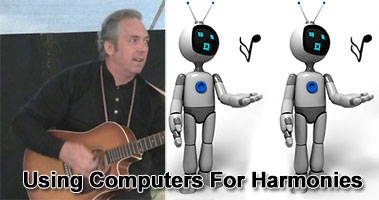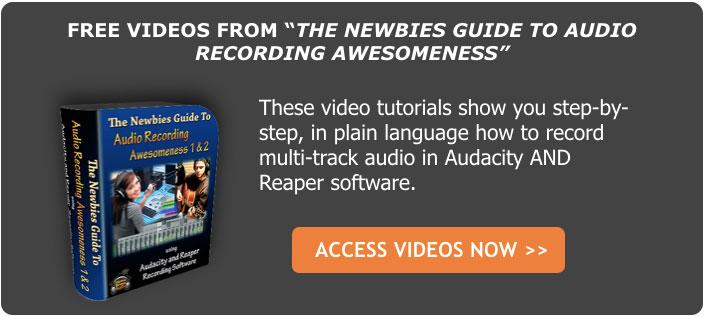There are different ways to produce a song, but most often the tendency is for producers to build it from the inside out. They start from the center and build their way out. Now once the core has been built then they just add up the other parts like the introduction, the bridge, and the outro. Although nothing is wrong with doing so but there are tendencies where important parts of the song are neglected or not given enough emphasis. Here are a few pitfalls you need to avoid if you are producing a song.
Intro’s and Outro’ don’t neglect them they are as important too.
Continue reading here: https://theproaudiofiles.com/music-production-pitfalls/
Music Recording
Music and Audio Terminilogy
If you have ever found yourself wondering what those three letter acronyms or all that music jargon actually meant, then you are not alone. It isn’t enough that that the audio recording and music worlds are choking on weird jargon and bizarre terms, but now we have acronyms to abbreviate what is already often incomprehensible . Here are some of the terms that you might have encountered during recordings and tutorials.
ADC – Analogue to Digital Converter is a device used to convert a signal from analogue to digital. What does “analogue” mean? Why do we use that word to describe it?
Read more here: https://music.tutsplus.com/tutorials/music-and-audio-glossary-of-terms–cms-28128
Using Reaper's ReaTune For Vocal Harmony
 To record vocal harmony, the most basic thing to do is have a human sing each part and put those parts on their own tracks in audio recording software. If you can do it that way, it is arguably the best and most preferable method of doing it.
To record vocal harmony, the most basic thing to do is have a human sing each part and put those parts on their own tracks in audio recording software. If you can do it that way, it is arguably the best and most preferable method of doing it.
But you can also create harmony recordings using software.
Why would you want to use software to create vocal harmonies?
There could be several reasons, like:
- You would rather not deal with singing harmonies, or it’s not in your skill-set
- You don’t have anyone else around to sing your harmonies
- You want the sound of artificial voices – that sound a bit like singing robots – as an effect
What software can you use for this?
There are several programs available that are specifically designed to create vocal harmonies. Two of the most popular are Antares Harmony Engine (brought to you from the makers of Auto-Tune), and Vielklang Instant Harmony. There are others, of course. These programs work really well. But they can be a bit pricy. Harmony Engine is $199 and Instant Harmony is $149.
If you don’t have a couple hundred bucks in your budget for this, there are a couple of other options. Reaper, one of the best and most affordable recording programs around, comes with a couple of different plugin effects that you can use to create harmony. One of these is called ReaVoice. I did a video on how to use it here. The other one is called ReaTune.
Using ReaTune to create harmonies
The primary use of the ReaTune effect is to correct pitch, very much like Auto-Tune and similar programs. But you can use the pitch-altering ability to create harmony notes from a single track of actual vocals. You can see how it works in the video below. But in a nutshell…
- You sing (or have someone sing) the melody of a song on a track (say Track 1) in Reaper
- Copy the vocal to track 2
- Load the ReaTune effect on track 2
- In the ReaTune window, draw in the harmony notes to shift the original audio to those notes
- Repeat the process for each track of harmony. For instance in the video below, the song has 3-part harmony. The sung vocal track is on track one with ReaTune generating one harmony on track two and the 3rd part on track 3
This is a lot more clear in the video here:
[genesis_club_wistia_video id=”0ecf4l543e” pt=”75″]
This video is an excerpt from our course Harmony Recording Awesomeness. Find out more about that by CLICKING HERE.

Put Emphasis On Your Background Instruments
“Everybody is entitled to 15 minutes of fame” – Andy Warhol
It is an obvious fact that in a stage of performers not all will be a the center stage but it is the duty of the mixer to ensure that everybody still gets their share of fame. Just because they are background instruments doesn’t mean they are just there for visual display. Each instrument has a distinct sound and a part to play in the entire show. Here are a few tips on how you can put emphasis to your background instruments, without over-stepping on the true stars of your show.
Read more here: http://en.audiofanzine.com/recording-mixing/editorial/articles/highlighting-background-instruments.html
Modular Synth 101: Choosing Your Eurorack Fil
Conceptualized in the 1960’s Bob Moog made it possible through his modular design for the masses to avail. Later on, it was well known as the Mini Moog, it was analogue synthesis right at the palm of your hands. what started as a concept of creating new types of sound is now well known and pretty much is used in any recording.
Today we call these different types of sound creation as filters, here is a quick lesson on filters, how and why you should use them.
We begin with an oscillator also known as the bit that makes the noise.
Read more here: http://www.musictech.net/2017/01/modular-synth-tutorial-eurorack-filters/